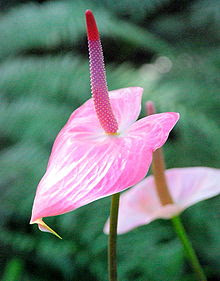The lawn has turned brown, the perennials are sleeping underground, trees have lost their leaves, nothing is blooming, and garden activity has come to a winter halt. What could be more depressing to a gardener! Well, that’s one way of looking at it, but let me offer another perspective. Winter has it’s own unique show and advantages. You just need to stroll the yard and take a closer look.
Those features that come into prominence during winter include the predominance of evergreen plants, exfoliating bark, contorted twigs and branching structure, visually interesting bark, special winter colorations, persistent berries and seed pods, ornamental grass plumage, and prominent buds. In fact, these features are not seen in the warmer weather prime time garden, are actually photogenic, and can keep the excitement of gardening going all year round.
 |
| Winter Garden Surprises (referenced in this article) |
Evergreen plants such as hollies, hardy palms and cycads, conifers, loropetatum, TX Mountain Laurel, hardy agaves and yuccas, viburnum, abelia, eleagnus,, hardy citrus, just to name a few, add color to the winter garden, especially if variegated. Some plants are semi-evergreen depending on how low temperatures fall, such as roses, dwarf pomegranite, barbados cherry. Green is a color to be enjoyed during the winter months.
Exfoliating bark can be very intriguing such as that seen on varieties of Crepe Myrtles, Chinese Elm, and Sycamore as good examples. Exfoliating means a peeling away of a layer of smooth bark to reveal a deeper color beneath.
Contorted twigs and unusual branching structures are eye catching in winter and not well seen during growth season when leaves hide these features. Examples are the contorted varieties of Mulberry, Hazelnut and Willow.
In central Texas, you need not go far to see unusual bark. Just look at our native and local Bur Oak with it’s rugged and craggy bark. It looks unsightly to some but is strikingly eye catching. Branching patterns on "naked" trees can very artistic ranging from the rigid, rough look of the Bur Oak to the fibrous, full, smooth look of the Mexican Plum. Some trees and shrubs have winged bark. Bark on a tree is definitely an ornamental feature not to be overlooked.
Special winter colorations can be seen on many yuccas, junipers, arborvitae, and other conifers. This is usually a bronze, pinkish, or reddening coloration brought about by cold temperatures, which, in effect, reduces photosynthesis during this dormant period of the year.
Persistent berries and seed pods are common among many central Texas plants. The Yaupon Holly, although evergreen also, holds it’s bright red berries throughout the winter to provide food for many of our local birds, and the deciduous Possomhaw holly does the same - red berries lining bare branches throughout the winter. The Crepe Myrtles cling to their seed pods throughout the winter, even after the open and disperse the seed. Roses going dormant display colorful seed pods known as hips.
Grass plumage can be very beautiful adding a unique texture to the winter garden, so don’t be to quick to prune back those dead clumps of grass. That can be done in early spring. Enjoy the seed plumage while it lasts. Muhlenbergias and Miscanthus are particularly beautiful and maintain their plumage well into winter.
Prominent pubescent buds can be seen on deciduous Magnolias during winter. They form during fall, persist during winter and remind us that spring won’t be far away. The plants in the Magnolia family, whether evergreen or deciduous display this feature well.
Winter sometimes produces unusual happenings in the garden. Often a bulbous plant will get confused by changing weather patterns and pop up unexpectedly or a flower bud will open in warm weather thinking it is spring already. A walk through the yard and garden in winter can be interesting. Like any other time of the year, there can always be unexpected surprises.
If you plan your garden and landscape to provide for seasonal variations and ensure that there will be plantings to inspire you regardless of the season, your gardening joy will be never ending. Every season has it’s rewards including the dormant season of winter.









































 Classificaion of
Classificaion of 



